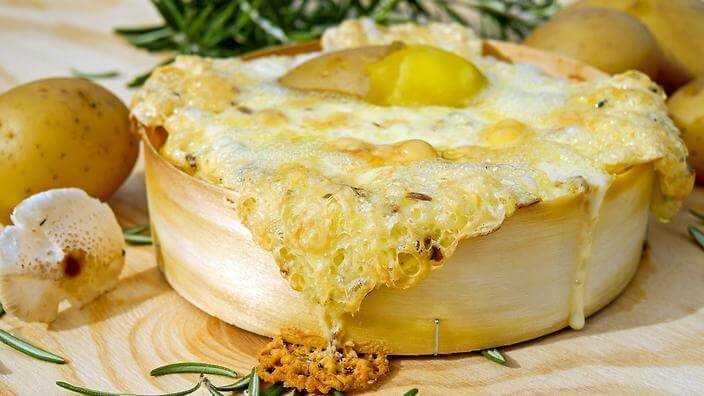
Cheese is a wonderful thing, and camembert is one of the best cheeses around. It’s soft and creamy and, when prepared correctly, really not too hard to eat.
Camembert is one of the easiest cheeses to pair with if you’re at a loss.
A mild cheese with a creamy texture, camembert pairs well with many foods, and is one of the cheeses that can handle being paired with many wines.
Of course, camembert is best served as a dessert cheese, but if you’re looking to pair it with a meal, it goes well with most foods.
Camembert experience isn’t complete without a few accoutrements to go along with it.
The French cheese Camembert is often served as a dessert, but some people like to eat it with a sweet wine like Port or Sauternes.
Camembert is also delicious when eaten with fruits like pears, figs, and apples, and in fact, the varieties of Camembert with fruit in the name usually come with instructions on how to best serve them.
Collection of favorite things to eat with camembert
- Camembert with fruits, like pears or apples.
- Camembert with Grilled fish.
- Camembert with a loaf.
- Camembert with nuts.
- Camembert with meat.
- Camembert with plain crackers.
- Camembert with garlic bread.
- Camembert with honey.
- Camembert with wine.
- Camembert with jam.
- Camembert with stuffed Mushrooms.
History of Camembert
The cheese known as Camembert was created by a farmer from Normandy in 1791 when he added the scent of camembert to the local cheese named Livarot.
It was not until 1891 that the cheese we know today was created by another farmer, Mr. Ridel, who made the cheese take on the shape we know today.
The cheese is allowed to age for at least 60 days, during which the rind is washed daily. Once the cheese has aged it is sold and then eaten.
Before the French Revolution in 1789, Camembert was considered a peasant’s food and was rarely eaten by the nobility.
When Marie Antoinette traded her jewels for a wheel during her visit to a dairy farm. The cheese became a symbol of Marie Antoinette’s extravagance.
The cheese is made from raw cow’s milk and eaten in a similar way to many other soft cheeses, although it is better to eat Camembert at room temperature rather than straight from the refrigerator.
To make the cheese, unpasteurized milk is introduced into a round, perforated mold and then left at room temperature until the cheese is ready.
How to Eat Camembert?

Cheese is a food that many people enjoy, but not everyone knows how to eat. For the most part, it’s pretty straightforward; just pop it into your mouth. Simply take your Camembert out of the wrapper, unwrap it, and eat it
However, some cheeses require a little bit of care when being eaten. Camembert is one of these cheeses. It is a soft cheese that is traditionally encased in a harder rind. Once it has been shaved, some people choose to eat the cheese as is, while others like to dip it in wine or fruits.
Because of camembert’s high moisture content, it should never be cut or broken. The best way to eat camembert is to simply cut off a small piece and pop it in your mouth.
This will allow you to get the full flavor and smell of the cheese. It is typically served at room temperature, and it is sometimes paired with wine or fruit preserves. It is often eaten on bread or crackers, or alone as a snack.
How Camembert is Made?

Camembert is probably the best known of the soft cheeses. Mastering the craft of cheese making takes years.
But, you’d be surprised at how easy it is to make your own Camembert-style cheese at home. You’ll need a few basic ingredients, including milk, rennet, salt, and penicillium.
The process begins by heating the milk to the target temperature. Then, you add rennet, and stir it for 6 minutes. After that, you need to allow the mixture to sit still, so the curd can set.
The curd will then be cut into smaller pieces, and then the cheese gets a bath in brine. It all sounds much easier than it actually is, and of course, you’ll have to age the cheese before you can eat it.
The soft cheeses are produced through acidification, while the harder varieties are made through the addition of rennet—an enzyme that comes from the stomach of young animals.
